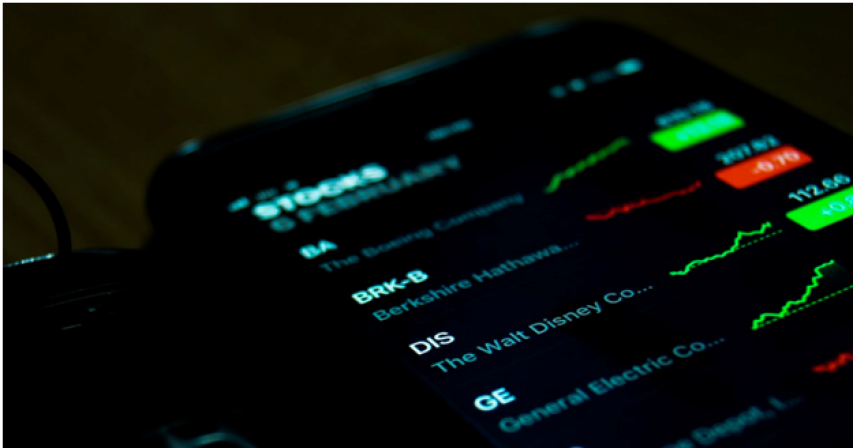What on Earth is Going on with Tech Stock Prices?
- 4 years ago

Trading Tech Stocks Like a Boss: Risk On, or Risk Off?
The NASDAQ Composite Index staged a meteoric comeback after the dramatic lows recorded in March 2020. In the months that followed, unprecedented gains were recorded. Analysts could not believe the pace and scope of the recovery. Sceptics remained unconvinced however. In the rollercoaster world of equities, nothing is assured, especially a long-running bull market. Yet, that's precisely what investors and traders have been privy to for several years.
The recent ‘September Correction’ was overdue, but it still took everybody by surprise. The NASDAQ – a beacon of hope in an otherwise grim economic climate plunged 5% + on Thursday, 3 September. The losses cut deep, but savvy traders found an opportunity to short stocks with put options, and stop loss orders, thereby securing their profits as markets soured.
Investors weren't so lucky. Stocks like Apple which recently split in 4 were expected to ride the wave. That's precisely what didn't happen. After Apple (AAPL) split from over $500 per share, it briefly rallied before it tanked. The thinking – at least among a good chunk of investors and traders was as follows: at $500 + per share, not too many people can afford to buy Apple stock. As the world's most valuable company, this tech titan will surely attract a huge number of investors and traders if its stock price is more affordable. There are proponents and opponents of this line of thinking.
From a rational perspective, it makes sense.
Somebody with a couple of hundred dollars to pump into stocks would surely prefer buying Apple at $130 per share, as opposed to $500 + per share. So far, it hasn't turned out that way. Regardless, it’s still a good idea to get involved in the market now, starting with a standard trading account at a reputable brokerage. Since volatility is central to profitability, whether you go long or short, access to the markets can be particularly beneficial at a time like this. With the US elections coming up and near opposite economic policies envisioned by the incumbent Trump and his rival Biden, bullish and bearish traders stand to make a mint. Go long on Trump, and short on Biden. Makes sense?
Can China Cause Tech Stocks to Crash?
Circle back to Apple. The problem isn't that Apple isn't a great stock to buy and hold, or pump and dump; the issue is that earnings and performance have been outpaced by stock price appreciation to a huge degree. In other words, Apple (and as it turns out dozens of other tech stocks) are heavily overvalued. Overvalued stocks tend to err on the side of corrections from time to time. When analysts assign ratings of bullish or bearish to stocks, they also consider the earnings, 1-year price projections, and inherent value in the stock. Apple is a great stock, but it's simply too expensive. So, the inevitable happened. Economic data releases, geopolitical concerns, profit-taking, and other issues merged with the reality of overvalued stocks to drive markets lower.
The geopolitical concerns are substantial, and relate specifically to China – the #1 competitor to US hegemony in the world. News from China is that it will develop a proprietary microchip industry to avoid US restrictions and regulations. Naturally, this served as a major bugbear to US stock performance, and it reflected in the markets. Everyone expected a correction to the downside sooner or later. China simply hurried its arrival. There are safeguards and strategies that traders and investors can implement to protect against this type of volatility. Foremost among them are stop loss orders, either in the form of set dollar amounts, or trailing stop loss percentages. Either way, these mitigating tools can lock in profits and protect from a tumultuous slide into oblivion.
Should you buy into the hysteria?
Tech stocks across the board suffered short-term hysteria with panic selling sending prices tumbling. No matter how strong the tech stock, it suffered substantial losses leading into the Labor Day weekend in the US. These include Microsoft (MSFT), Facebook (FB), Google (GOOG), Twitter (TWTR), and of course Apple (AAPL) among a long list of others. It didn't help to switch to gold, since SPDR (GLD) also slid as people bailed out, en masse from the markets. Not that a switch to fixed-interest-bearing savings accounts would have been any better – there is virtually no yield on these types of investments. Overall the gains from stock investments far outweigh the stability and yield calculable from fixed interest-bearing accounts like bonds, CDs, or money under the mattress.
Gurus advise market participants to simply stick to their proverbial guns. Don't sell when a sell-off is taking place in the markets – that's only a guarantee of losses. As Warren Buffett always recommends, stay the course for the long-term. Current trends with the NASDAQ remain bullish, but reversion to the mean is clearly a reality that all markets are subject to. The quicker you can capitalize off the rise and fall, the better, especially when trading tech stocks. For those who held their tech stocks, Bravo! Dividends will be coming in October.
What's hot and what's not right now? Believe it or not, Apple, Tesla, Google, Facebook, Microsoft, Intel, and Amazon are still terrific companies. Sure, they are overvalued, but long-term they will prove to be viable holdings. For short-term traders, tech-stock losses allowed other sectors to benefit. Carnival Cruise Lines (CCL), Royal Caribbean (RCL), retail stocks, and restaurant chains enjoyed a little breathing room. As the world slowly prepares for a return to the norm, there will be tremendous upside potential in travel and tourism, energy stocks, retail, and beyond. Remember, if things really sour, there's always gold!
Comments